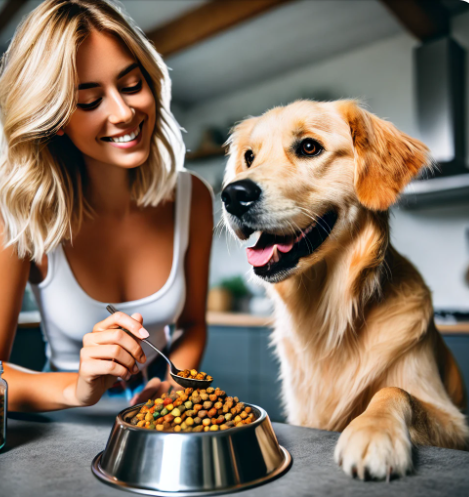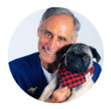General Appearance: A well-balanced, powerful, and active dog with a symmetrical build. Neither clumsy nor long-legged, it exhibits a kind expression and a confident, eager, and alert personality. Primarily a hunting dog, it should be in hard-working condition. Overall appearance, balance, and movement take priority over individual features. Faults: Any deviation from the ideal that hinders function or contradicts breed character.
Size, Proportion, Substance: Males stand 23-24 inches at the withers, females 21.5-22.5 inches. Dogs outside the standard by up to an inch should be proportionally penalized, while deviations greater than one inch result in disqualification. Body length slightly exceeds height at a 12:11 ratio. Weight: males 65-75 lbs, females 55-65 lbs.
Head: Broad skull, slightly arched without exaggerated forehead or occipital bones. Well-defined but not abrupt stop. Muzzle deep and wide, nearly as long as the skull, straight in profile, and smoothly blending. Flews are not heavy. Whisker removal is permitted but not preferred. Eyes are medium-large, friendly, and intelligent, with dark, close-fitting rims, well-set, and deep in sockets—preferably dark brown, medium brown acceptable. Faults include slanted, narrow, or triangular eyes and any visible white or haw. Dogs with eyelid abnormalities (e.g., entropion, ectropion) are disqualified. Ears are short, set above and behind the eye, and lay close to the cheek, with the tip covering the eye when pulled forward. Low-set, hound-like ears are faults. Nose is black or brownish black, with seasonal fading acceptable. Pink noses or those lacking pigmentation are faults.
Bite: Scissor bite where the lower incisors touch the inner upper incisors. Undershot or overshot bites are disqualifications. Misaligned teeth or level bites are undesirable but not disqualifying. Full dentition required; missing teeth are serious faults.
Neck, Topline, Body: Medium-length neck, muscular and smoothly blending into well-laid-back shoulders, without throatiness. Strong, level topline from withers to slightly sloping croup in both standing and movement. Faults include sloping, roach, sway back, or improper croup angles. The body is well-balanced, short-coupled, and deep-chested. The chest width between the forelegs should at least match a man’s closed fist.
Forequarters: Muscular and well-coordinated with the hindquarters, allowing for free movement. Shoulder blades are long, well laid back, and positioned closely at the withers. Upper arms are of similar length to the shoulder blades, setting the elbows back beneath their upper tips, close to the ribs without looseness. Viewed from the front, legs are straight with good bone, avoiding coarseness. Pasterns are short, strong, and slightly sloped without weakness. Dewclaws on the forelegs may be removed but are typically left intact. Feet are medium-sized, round, compact, well-knuckled, and have thick pads. Excess hair may be trimmed for a natural appearance. Splayed or hare feet are faults.
Hindquarters: Broad and strongly muscled. The croup slopes slightly, with the pelvic bone angled at approximately 30 degrees from horizontal. In a natural stance, the femur meets the pelvis at about a 90-degree angle. Stifles are well-bent, hocks well let down, with short, strong rear pasterns. Feet match the front in structure. Legs appear straight from the rear. Faults include cow-hocks, spread hocks, and sickle hocks.
Coat: Dense and water-repellent with a good undercoat. The outer coat is firm and resilient, neither coarse nor silky, lying close to the body, and may be straight or wavy. A natural ruff is untrimmed, with moderate feathering on the back of the forelegs and underbody, and heavier feathering on the front of the neck, back of thighs, and underside of the tail. Coat on the head, paws, and front of the legs is short and even. Excessive length, open coats, or limp, soft coats are highly undesirable. Feet may be trimmed, and stray hairs neatened, but the coat’s natural outline should not be altered by cutting or clipping.
Color: A rich, lustrous golden in various shades. Feathering may be lighter than the main coat. Aside from age-related graying or whitening, any white marking beyond a few hairs on the chest should be penalized based on its extent. Light shadings should not be confused with white markings. Extremely pale or dark body color is undesirable. Some allowance is given for light-colored puppies whose coats are expected to deepen with maturity. Noticeable black or off-color hair is a serious fault.
Gait: When trotting, movement is free, smooth, powerful, and well-coordinated, demonstrating good reach. From any angle, legs remain straight, without turning in or out, and feet do not cross or interfere with each other. As speed increases, the feet naturally converge toward the centerline of balance. To showcase an accurate gait, dogs should be presented on a loose lead.
Temperament: Friendly, reliable, and trustworthy. Aggression or hostility toward other dogs or people in typical situations, as well as excessive timidity or nervousness, is inconsistent with the Golden Retriever’s character and should be penalized accordingly.


 Types of Diets for Golden Retrievers
Types of Diets for Golden Retrievers
 In 2021, Dr.
In 2021, Dr.  In 2022,
In 2022, 

Thanks for expressing your knowledge about Best Diet For Golden Retrievers.
You helped me a lot by posting this article about Best Diets For Golden Retrievers
Your articles are very helpful to me. Best Diet For Golden Retrievers is awesome.
Thank you for writing this post about the Best Diet For Golden Retrievers. Will print and put on the fridge!
Best Diet For Golden Retrievers is very well written.
Best Diet For Golden Retrievers will come in handy for us!
Thanks, very nice post.